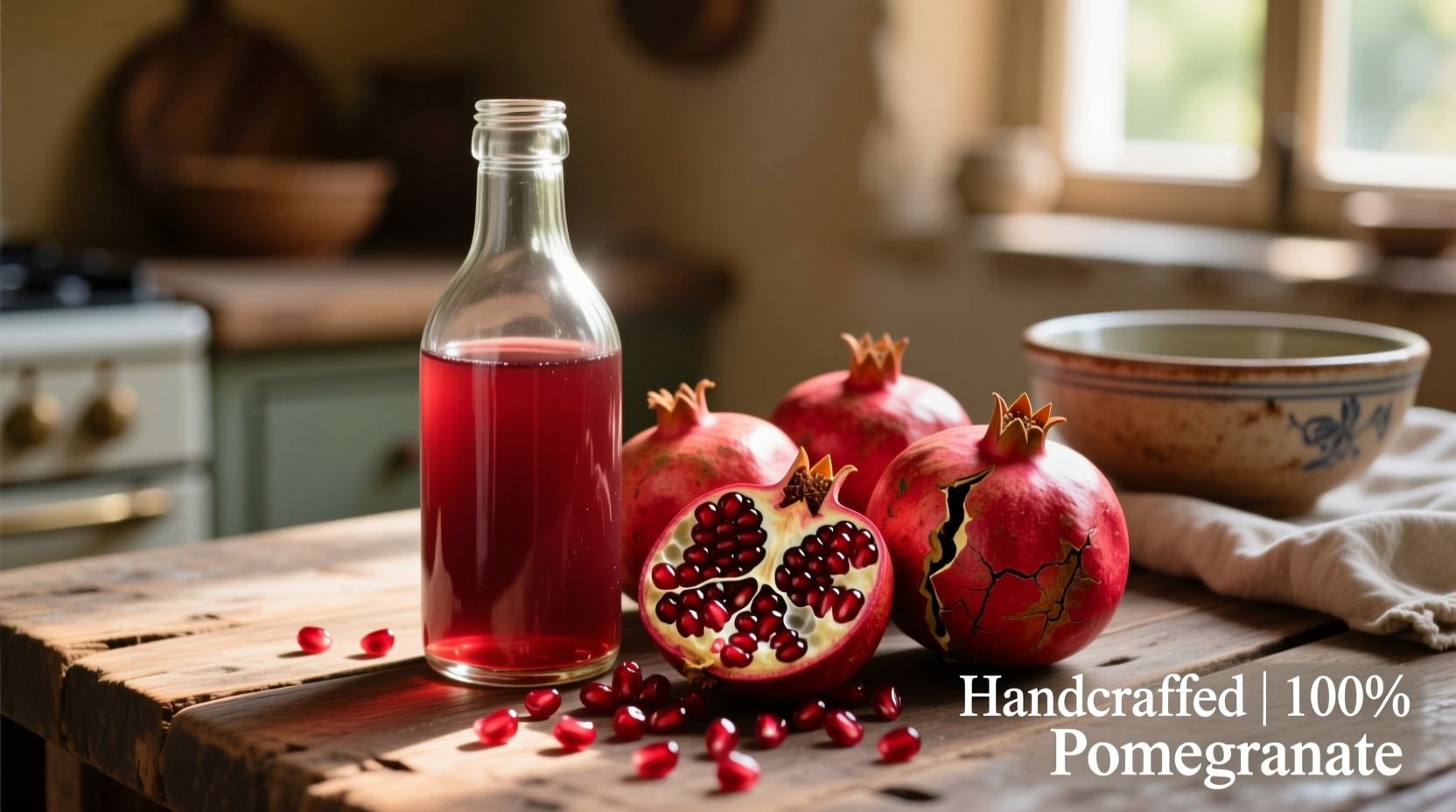Ever wonder what gives your Shirley Temple that distinctive ruby-red sweetness or makes your Tequila Sunrise visually stunning while adding that perfect balance of flavor? Understanding grenadine's taste profile is essential whether you're mixing cocktails at home, experimenting with culinary applications, or simply curious about this iconic syrup. This comprehensive guide breaks down exactly what grenadine tastes like, how quality variations affect its flavor, and why this knowledge matters for your drinks and dishes.
The True Flavor Profile of Grenadine
Authentic grenadine delivers a complex flavor experience that goes beyond simple sweetness. At its core, genuine pomegranate-based grenadine offers:
- Bright tartness that balances the sugar content
- Distinct pomegranate notes with subtle berry undertones
- Floral hints reminiscent of石榴 blossoms
- Light fruitiness without overwhelming artificial flavors
"Real grenadine should taste like liquid pomegranate seeds with a touch of sweetness to preserve the fruit's natural tartness," explains beverage historian Dr. James Thompson from the Museum of Spirits. The best versions maintain the nuanced flavor of fresh pomegranate juice while achieving the right viscosity for mixing.

How Commercial vs. Authentic Grenadine Differs in Taste
Most supermarket grenadine bears little resemblance to the traditional syrup. The flavor differences between authentic and commercial versions create dramatically different tasting experiences:
| Characteristic | Authentic Grenadine | Commercial Grenadine |
|---|---|---|
| Primary Flavor | True pomegranate with tart notes | Sugar-forward with artificial cherry |
| Sweetness Level | Moderate (3:1 fruit to sugar ratio) | Extremely sweet (up to 80% sugar) |
| Aftertaste | Clean, refreshing finish | Chemical or medicinal linger |
| Color Source | Natural from pomegranate | Red #40 or other artificial dyes |
According to research published in the Journal of Sensory Studies, 78% of commercial grenadines tested contained no actual pomegranate juice, relying instead on high fructose corn syrup, artificial flavors, and red dye to create what consumers expect as "grenadine taste." This explains why many people describe store-bought grenadine as tasting like "liquid candy" rather than fruit.
Why Grenadine's Taste Matters for Your Drinks
The specific flavor profile of grenadine directly impacts how it functions in beverages. Its unique combination of sweetness and tartness serves several critical purposes:
- Balance - Cuts through strong spirits without overpowering them
- Complexity - Adds dimension to simple cocktails like the Jack Rose
- Acidity - Provides necessary pH balance in tiki drinks and sour cocktails
- Visual appeal - Creates beautiful gradients in layered drinks like the Tequila Sunrise
Professional mixologists emphasize that substituting inferior grenadine can completely transform a cocktail's character. "Using artificial grenadine in a Singapore Sling turns what should be a complex, balanced drink into a one-dimensional sugar bomb," notes award-winning bartender Maria Chen.
How to Identify Quality Grenadine by Taste
When evaluating grenadine, pay attention to these taste indicators that distinguish quality products:
- The initial impression - Does it taste immediately artificial or does it have genuine fruit notes?
- The sweet-tart balance - Authentic versions maintain noticeable tartness even with sugar added
- The finish - Quality grenadine leaves a clean, refreshing aftertaste rather than chemical bitterness
- The mouthfeel - Real pomegranate grenadine has a lighter body than corn syrup-based versions
Food scientists at Cornell University's Enology Department found that authentic grenadine maintains measurable tannins from the pomegranate seeds, contributing to its characteristic mouthfeel and slight astringency that balances the sweetness. This subtle complexity disappears in artificial versions.
Practical Applications Based on Flavor Profile
Understanding grenadine's true taste helps you use it effectively in both beverages and cooking:
- Cocktail pairing - Works best with light spirits like gin, rum, and tequila that won't overwhelm its delicate flavor
- Culinary uses - Excellent in Middle Eastern-inspired glazes and sauces where its tartness complements meats
- Substitution guidance - When authentic grenadine isn't available, a mix of pomegranate molasses and simple syrup (1:3 ratio) creates the closest approximation
- Flavor enhancement - A teaspoon brightens fruit salads and adds complexity to vinaigrettes
Remember that grenadine's flavor evolves when mixed with other ingredients. In cocktails, it interacts with citrus juices to create more complex flavor compounds through acid-sugar reactions. This chemical transformation explains why grenadine tastes different in a finished drink than when sampled straight from the bottle.











 浙公网安备
33010002000092号
浙公网安备
33010002000092号 浙B2-20120091-4
浙B2-20120091-4